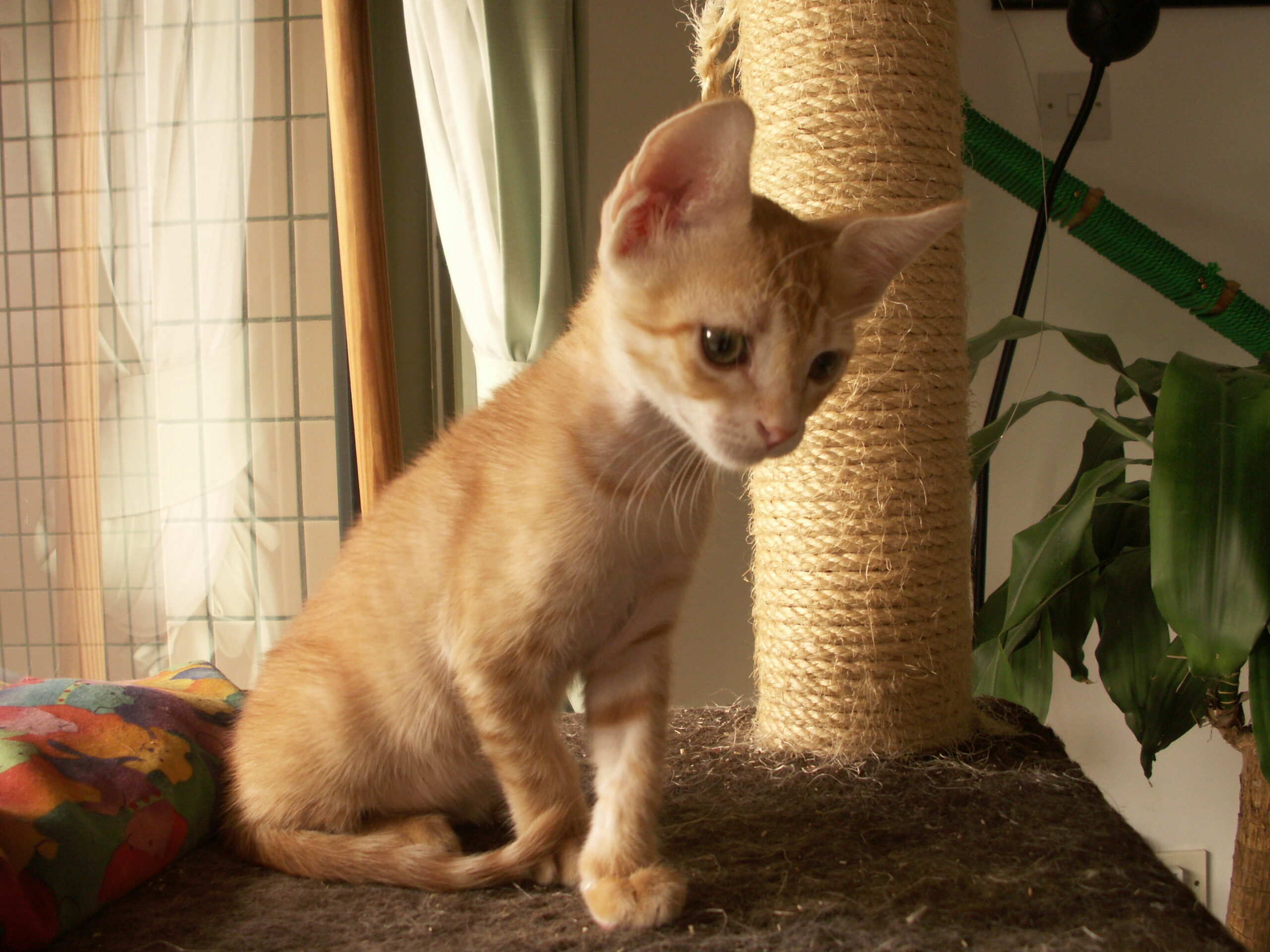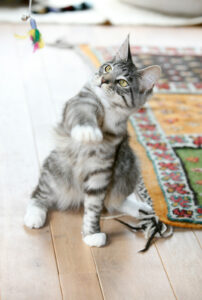Barks Blog
Clicker Training for Cats (4/6)
By Paula Garber and Francine Miller
Clicker Training for Behavioral Problems:
Clawing Furniture/Destructive Furniture Scratching

Destructive furniture scratching is a commonly reported problem in cats, and one of the many unwanted behaviors that clicker training can help. Without going into all the reasons cats scratch (for more details on scratching, see Scratch Here, Not There, BARKS from the Guild, July 2016, pp. 25-26), it is suffice to say that cats have to scratch. It is a natural behavior that serves many purposes. Having said that, cats can certainly be taught to stay away from human furniture and focus on cat furniture.
Stopping a cat from destroying furniture starts with making the area unavailable to sharp claws. Cover the area with something the cat does not want to scratch, such as Sticky Paws™ double-sided tape. Sheets and plastic shower curtain liners can also deter a cat from scratching. At the same time you are making these areas unappealing, you also provide a more appropriate scratching surface such as a tall scratching post in front of or next to the blocked area.
When your cat is scratching the post, reinforce him with a click and a treat. In this case, the treat might be catnip or silver vine on the post itself, or dragging a feather toy across the post to engage your cat in play. Every time you see his scratching the right surface, click and reinforce. When the cat is scratching the cat furniture habitually, you can gradually decrease the use of the clicker and shift from treats to verbal praise.
Stalking, Biting and Scratching

The sequence of predation starts with locating the prey, capturing (stalking, chasing, pouncing), killing and eating it. Some of these actions are hardwired into every cat, so it is unlikely that training could ever switch off these behaviors completely.
Indoor cats do not have the opportunity to hunt as they would if they were surviving in the wild. Having an appropriate outlet for their prey drive is critical for their well-being. The goal is to reduce or discourage hunting on live prey (including human hands and feet) by providing the cat with games that are as rewarding, cognitively engaging, time consuming and as tiring as real hunting.
Clicker training can be used to direct predatory behavior toward acceptable targets, i.e. toys that provide hunting opportunities while creating a game that is rewarding for both the cat and the owner. Use nose targeting to direct your cat’s attention away from your hands and feet, and toward appropriate toys. You can also clicker train him to sit on cue, so when he approaches you in a playful mood, you can cue him to sit while you grab his favorite wand toy.
If your cat likes to grab your feet as you go up or down the stairs, or hide under things and ambush your ankles or legs as you walk by, be prepared by carrying enticing toys (small mice, ping pong balls, etc.) that you can toss away from you to redirect his attention from his sneak attack. You can also keep small containers of these toys in the ambush zones.
Taken from the article Clicker Training for Cats, first published in BARKS from the Guild, November 2017, pp. 16-23.
About the Authors
Paula Garber holds a master’s in education and is a certified animal training and enrichment professional and certified feline training and behavior specialist. She is also certified in low-stress handling, and pet CPR and first aid, and is pursuing a diploma in feline behavior science and technology from the Companion Animal Sciences Institute. Based in Ossining, New York, she owns and operates LIFELINE Cat Behavior Solutions, is currently chairwoman of PPG’s Cat Committee and is a supporting member of the International Association of Animal Behavior Consultants. She also serves on the Cat Protection Council of Westchester in her community.
Francine Miller is an applied animal behavior counselor and associate certified dog behavior consultant (IAABC certified associate) who has 13 years experience treating dogs and cats with behavior problems. She currently offers house calls for behavior consultations throughout San Diego County, California under the business name, Call Ms Behaving, and overnight pet sitting in the area around Carlsbad, California where she resides. She is also the vice chairwoman of the PPG Cat Committee.

